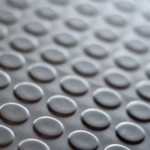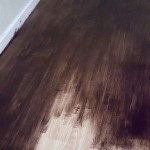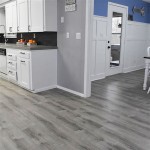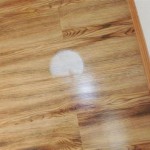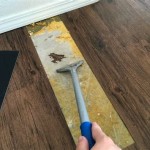How to Lay Floating Wood Flooring on Concrete Floors
Floating wood flooring is a popular choice for homeowners due to its ease of installation and affordability. It offers a beautiful and durable surface that can be installed over a variety of subfloors, including concrete. However, laying floating wood flooring on concrete requires specific steps and considerations to ensure a successful installation.
Prepare the Concrete Subfloor
The success of floating wood flooring installation rests on a properly prepared concrete subfloor. A smooth, level, and dry surface is crucial for preventing squeaks, unevenness, and potential damage to the flooring. Here's how to prepare the concrete subfloor:
1.
Clean the Concrete:
Remove all dust, debris, and loose particles from the surface. You can use a broom, vacuum cleaner, or damp mop for this purpose. Ensure that all grease, paint, and other substances are removed, as they can interfere with the adhesive used for the underlayment.2.
Repair Cracks and Gaps:
Fill any cracks or gaps in the concrete using an appropriate patching compound. Let the compound dry completely before proceeding.3.
Level the Concrete:
Uneven concrete can lead to uneven flooring and potential damage. If your concrete floor is not level, you can use a self-leveling compound to create a smooth, even surface. Apply the compound according to the manufacturer's instructions and allow ample drying time.4.
Moisture Barrier:
Moisture from the concrete can damage the wood flooring. Apply a moisture barrier to prevent moisture vapor transmission. There are a variety of moisture barriers available, including plastic sheeting, vapor retarder paint, and specialized underlayment products. Ensure the moisture barrier is properly sealed and overlaps at the seams.Installing Underlayment
Underlayment is a crucial element of a floating wood floor installation. It provides a cushion for the floorboards, reduces noise, and helps to insulate the space.
1.
Choose the Right Underlayment:
There are different types of underlayment available, each offering specific advantages. Consider factors such as insulation, sound reduction, and vapor barrier when selecting the right underlayment for your needs.2.
Installing the Underlayment:
Roll out the underlayment across the prepared concrete surface, ensuring it extends beyond the perimeter of the flooring area. Secure the underlayment using a stapler or tape, overlapping the seams by at least 6 inches. For underlayment with a vapor barrier attached, ensure the barrier is facing upwards.Laying the Floating Wood Flooring
Once the subfloor and underlayment are prepared, you can begin laying the floating wood flooring.
1.
Lay the First Row:
Starting in a corner of the room, lay the first row of wood planks, aligning them with the wall. Leave an expansion gap of approximately 1/4 inch between the wall and the planks, allowing for expansion and contraction due to temperature changes. Use shims to maintain this gap.2.
Stagger the Joints:
Each subsequent row of planks should be staggered to create a more visually appealing pattern and improve the strength of the floor. Use a tongue-and-groove system to connect the planks together, ensuring a tight fit.3.
Secure the Flooring:
Use a tapping block and mallet to gently tap the planks into place. Avoid over-driving the nails or staples, as it can damage the flooring.4.
Expansion Gaps:
Maintain expansion gaps around the perimeter of the room, as well as between the floor and fixed objects, such as cabinets or walls. Use a molding or trim to cover these gaps.Maintaining the Floor
After installation, it is important to maintain the floating wood flooring properly. This includes avoiding excessive moisture exposure, using appropriate cleaning products, and regular sweeping or vacuuming to remove dirt and debris. Following these maintenance steps can help to preserve the beauty and durability of your floating wood flooring for years to come.

How To Install Tongue Groove Hardwood Floors Over Concrete

Installing Wood Subfloors Over Concrete Hardwood Floors

Fitting Hardwood Floor To Concrete Wood And Beyond Blog

Installing Laminate Flooring Over Concrete The Ultimate Guide Aa Floors

Lvp Flooring Installation Over Concrete Subfloor Full Instructional Builds By Maz Flooret

Installing Engineered Hardwood On Concrete Villagio Guide

Floating Engineered Hardwood

Glue Wood Flooring To A Concrete Slab Fine Homebuilding

Glued Down Vs Floating Wood Floor Which Is Better

This Is Hard To Do Building New Framed Floor Over Concrete
Related Posts

